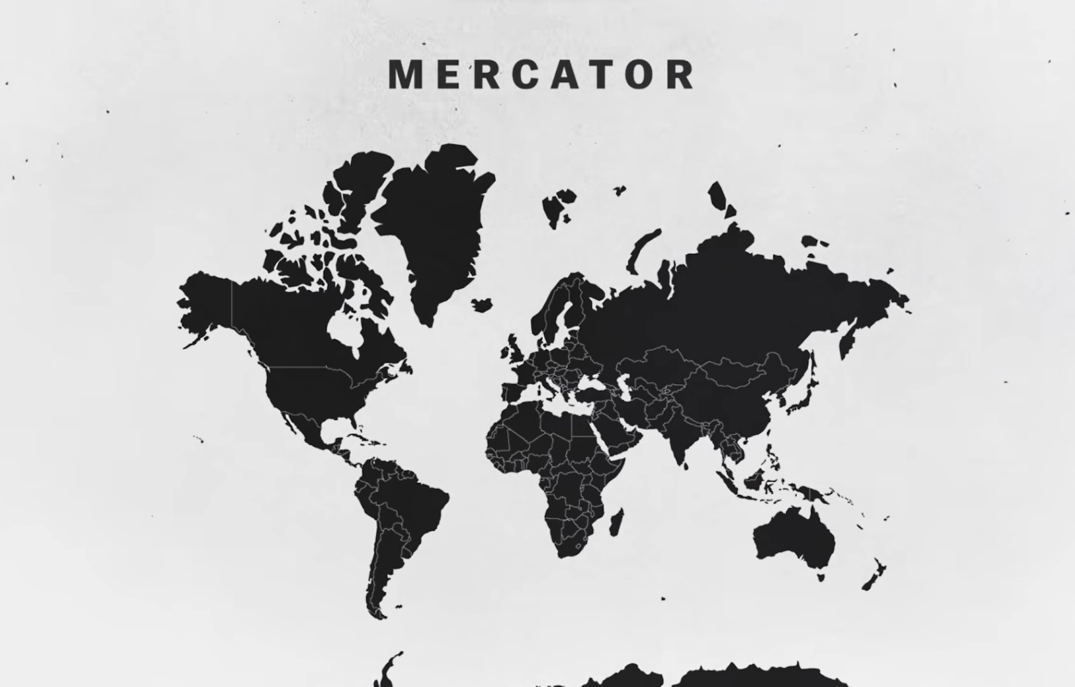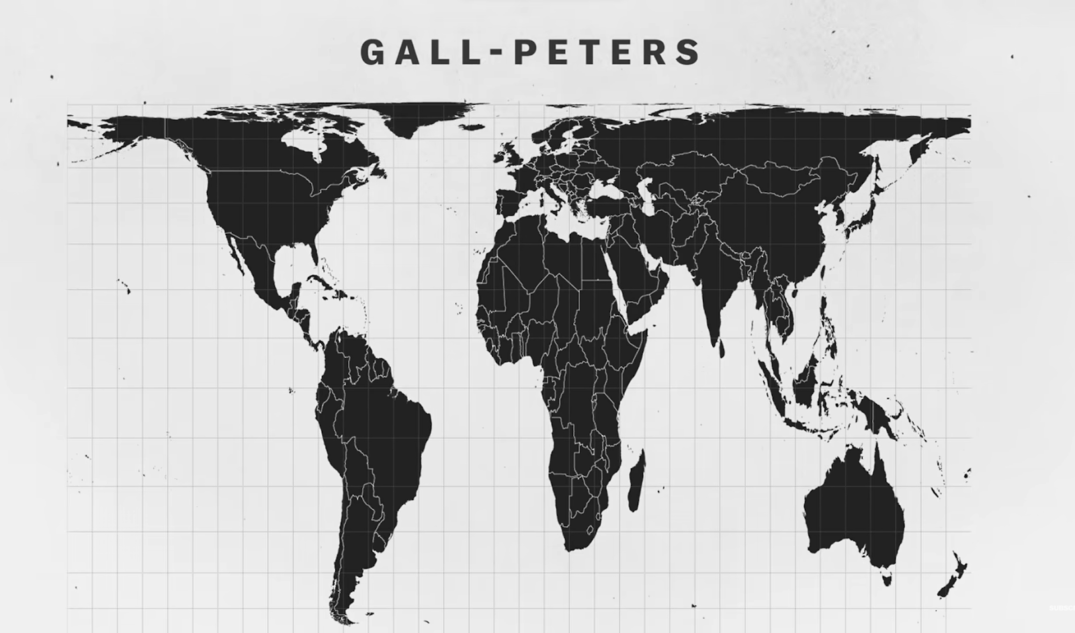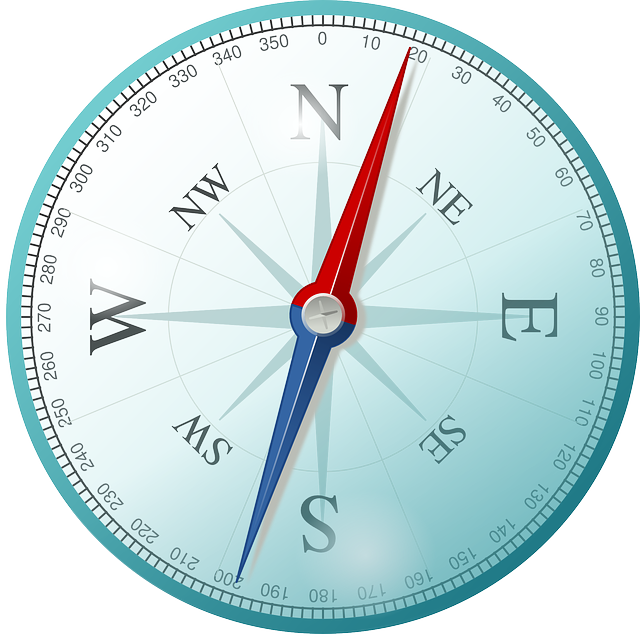In this article, we will delve into the contrasts among map projections, highlighting the best map projections and their diverse effects on maps.
It entails depicting the Earth’s surface by simplifying and projecting its spherical shape onto a two-dimensional surface.
Map Projections: Understanding the Basics
Map projections serve as techniques to depict Earth’s curved surface onto flat planes.
Within the field of cartography, a map projection is a specialized technique used to translate Earth’s spherical shape onto a flat map. It serves as a tool to handle distance and scale, allowing the vast expanse of the Earth’s surface to be depicted on a two-dimensional surface.
Before delving into the nuances of map projections, grasping their fundamental intent holds significance. This comprehension sheds light on the reasoning underlying the choice of a specific projection for a particular map.
Two Purposes of Map Projections
- Depicting the entire Earth onto a flat plane;
- Illustrating a specific portion of Earth and its environs to facilitate location identification on the flattened surface for Earth’s inhabitants.
Numerous map projections are employed, each bearing distinct merits and drawbacks.
Optimal Map Projections: Making the Right Choice
When it comes to creating a world map, accuracy in terms of scale and shape can be achieved with a flat representation. Yet, when the goal is to depict Earth in two dimensions, a multitude of diverse choices emerges.
| Projection | Main Features | Distortion | Use Cases |
|---|---|---|---|
| Mercator | Conformal (shapes preserved); strong for navigation | Extreme distortion towards poles | Navigation, nautical charts |
| Robinson | Pseudocylindrical; balances size and shape | Minimal distortion overall; slight at edges | World maps with a balanced appearance |
| Gall-Peters | Equal-area; accurate representation of areas | Distorted shapes; particularly at high latitudes | Addressing size disparities in maps |
| Winkel-Tripel | Pseudocylindrical; balance of size and shape | Balanced distortion; more accurate in both size and shape | General-purpose world maps |
| AuthaGraph | Equal-area; nearly global fidelity | Minimal distortion overall; small at edges | World maps emphasizing equal area |
1. Mercator
Among the extensively embraced projections, the Mercator projection, devised by Gerardus Mercator in 1569 with navigation as its purpose, stands out. Its renown arises from its capability to represent relative sizes with precision, proving invaluable for navigation purposes. Central to this projection’s principle is the notion that straight lines on the map align with Earth’s longitudinal great circles, while lines of latitude are depicted as perpendicular to these longitudinal lines.
- Ideally suited for regions in proximity to the Equator and particularly effective for marine navigation.

2. Robinson
In 1963, Arthur Robinson introduced the Robinson projection, which entails projecting Earth’s surface onto an imaginary sphere. It finds common use in educational textbooks for world maps, owing to its adaptability in being rendered as a rectangle that fits neatly on a single page. While its prominence in educational contexts is evident, this quality does place limitations on its suitability for diverse alternative purposes.
- Most effectively employed within the vicinity of the Equator.
3. Gall-Peters

The Gall-Peters projection, a cylindrical world map projection, was conceived by James Gall and Arno Peters. Gall introduced this projection in 1855, and in 1973, Peters significantly popularized it. Notably, it accurately depicts countries’ sizes relative to one another, but it vertically stretches the area around the equator. UNESCO advocates for this projection, which finds extensive use in British schools.
For showcasing both countries’ size and shape on a world map, the Gall-Peters projection emerges as the most precise choice.
- Optimal for displaying equivalent areas.
4. Winkel-Tripel
The Winkel-Tripel map projection, an adjusted azimuthal projection, was crafted by Oswald Winkel in 1921. Its primary objective is to mitigate three categories of distortion: area, distance, and direction.
- Most suitable for crafting world maps and versatile general-purpose maps.
5. AuthaGraph
The AuthaGraph Map projection is a distinct map projection created by partitioning the map’s spherical surface into 96 triangles. Invented in 1999 by Japanese architect Hajime Narukawa, this projection offers notably superior accuracy compared to conventional 2D maps and has the unique ability to be folded into a 3D globe.
- Ideal for maintaining accurate relative sizes of continents, oceans, and even Antarctica.
The Impact of Map Projections on Our Worldview
Map projections entail portraying the Earth’s surface on a flat medium like a map. These diverse methods serve distinct purposes, adept at representing specific features of the Earth’s surface or catering to particular applications.
Conclusion
Maps serve as a medium for individuals to comprehend the world and its visual components. In this dynamic era, gaining the fullest insight from our maps demands viewing the world through diverse lenses.
Maps hold versatile applications, ranging from dissecting weather trends to grasping topographical features. Varied projections enable map creators to strategically convey specific information to map viewers, ensuring a comprehensive understanding of the subject at hand.
FAQ
When focusing on a smaller region, the AuthaGraph projection stands out as a favorable choice due to its distinctive accuracy.
The Winkel Tripel projection is renowned for its superior accuracy, making it a preferred option for many mapping applications.
